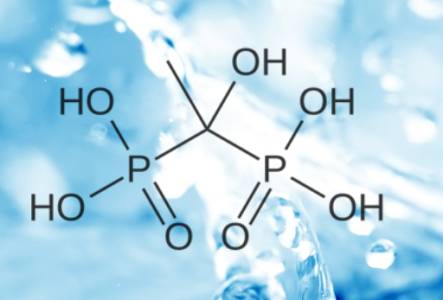Description
Phosphonates: Versatile Building Blocks for Diverse Applications
Phosphonates are organophosphorus compounds characterized by a P=O double bond and a P-C bond. Their unique chemical structure grants them a diverse range of properties, making them invaluable building blocks in various industries. This description explores their key characteristics, applications, and considerations.
Key Features & Properties:
- Versatile Reactivity: Phosphonates possess a rich chemistry, allowing them to participate in a wide array of reactions including nucleophilic substitution, addition, and condensation. This versatility enables their incorporation into complex molecules and materials.
- Strong Binding Affinity: The P=O and P-C bonds contribute to strong binding capabilities, particularly with metal ions. This property is exploited in many applications, including water treatment and catalysis.
- Biocompatibility (depending on structure): Certain phosphonates exhibit biocompatibility, making them suitable for biomedical applications, such as drug delivery and bone-growth stimulation. However, this is highly structure-dependent and careful consideration is needed.
- Thermal Stability: Many phosphonates exhibit good thermal stability, making them suitable for high-temperature applications.
- Flame Retardancy: Specific phosphonates are used as flame retardants due to their ability to interrupt combustion processes.
Applications Across Industries:
- Water Treatment: Phosphonates are widely used as scale inhibitors and corrosion inhibitors in industrial water systems, preventing the build-up of mineral deposits and protecting metal surfaces.
- Catalysis: Their ability to coordinate with metal ions makes them effective ligands in homogeneous and heterogeneous catalysis, influencing reaction rates and selectivities.
- Agriculture: Some phosphonates serve as plant growth regulators, improving crop yields and stress tolerance.
- Biomedicine: Certain phosphonates are incorporated into drugs, serving as carriers or influencing drug efficacy. Research also explores their potential in bone regeneration therapies.
- Flame Retardants: These compounds are added to polymers, textiles, and other materials to enhance fire safety.
- Polymer Chemistry: Phosphonates can be incorporated into polymers to modify their properties, such as enhancing their flame resistance or improving adhesion.
- Surfactants: Certain phosphonates exhibit surfactant properties, finding application in detergents and cleaning agents.
Types and Variations:
Phosphonates exist in a wide variety of forms, differing in their alkyl or aryl groups attached to the phosphorus atom. These variations significantly impact their properties and applications. Examples include:
- Alkylphosphonates: These are characterized by alkyl groups attached to the phosphorus.
- Arylphosphonates: These feature aryl groups attached to the phosphorus.
- Aminophosphonates: These contain amino groups, often exhibiting biological activity.
Safety Considerations:
While many phosphonates are relatively safe, certain compounds can be toxic or environmentally harmful. Always refer to the specific safety data sheet (SDS) for each individual phosphonate before handling or use. Appropriate personal protective equipment (PPE) should always be worn.
Conclusion:
Phosphonates represent a diverse and important class of organophosphorus compounds with applications spanning numerous fields. Their versatility, reactivity, and unique properties continue to drive research and development, leading to new applications and advancements in various industries. Understanding their specific properties and safety considerations is crucial for their responsible and effective use.
